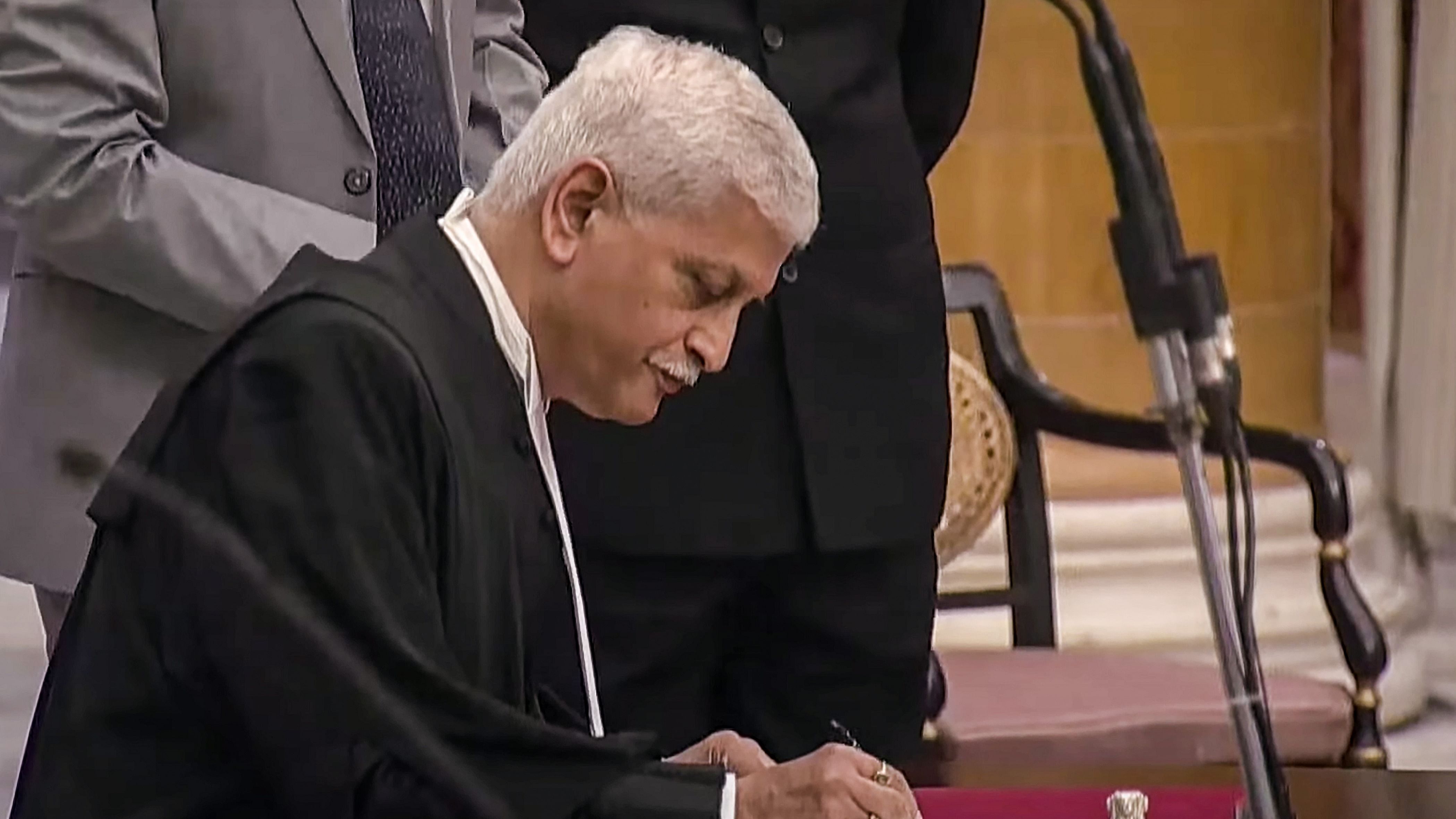
A day before he took oath as the 49th Chief Justice of India (CJI), Justice U U Lalit laid down broad contours on his properties as CJI, showing his willingness to accelerate the wheels of justice in the Supreme Court.
Though Justice Lalit started on a high note, he will have a herculean task to undertake in a 74-day tenure from appointment of judges to resuming proceedings on cases raising key constitutional questions.
He has century old-legacy, his father and grandfather were lawyers, to draw inspiration from to tackle some of the most far-reaching cases, which challenge constitutional validity of key government decisions -- abrogation of Article 370, amendment to the Citizenship Act, among others.
Justice Lalit plans to begin with listing constitutional bench cases after a long hiatus, and also to address daily squabbles between lawyers and registry, as he plans to come out with a regime for free mentioning of urgent cases before concerned benches.
At CJI N V Ramana's farewell on Friday, Justice Lalit said, "I have always believed that the role of the Supreme Court is to lay down law with clarity. The best way to do it is having larger benches, so that issues get clarified immediately, so that there is consistency and people are well aware of what are contours of peculiar positions of law."
A tearful senior advocate Dushyant Dave bidding farewell to Ramana, in the presence of justice Lalit, said he is very satisfied that justice Ramana is leaving this court in the great hands of justice U U Lalit and the judges who were to follow.
Justice Lalit's grandfather Ranganath Lalit, was a lawyer in Solapur much before India's independence, and his 90-year-old father, Umesh Ranganath Lalit, was an additional judge in the Delhi High Court when then Indira Gandhi government imposed emergency in 1975. He defied political pressure to grant bail to undertrial political prisoners and as a result, he was not confirmed as a high court judge.
Both father and son specialised in criminal law, and they both also practiced in the apex court. Justice Lalit was designated as a senior advocate by the Supreme Court in April 2004. He was appointed as the special public prosecutor by the top court for the CBI in all the 2G spectrum scam cases. He also worked with late Attorney General Soli Sorabjee between 1986 and 1992.
On August 13, 2014, Justice Lalit was elevated to the apex court directly from the Bar. He will however, have a short tenure as the Chief Justice as he will retire on November 8.
After late Justice S M Sikri, who was appointed directly from the Bar to the apex court as a judge, Justice Lalit will be the second CJI, being directly appointed from the Bar. Justice Sikri was the 13th CJI from January 1971 to April 1973.
Justice Lalit was a part of a five-judge Constitution bench which declared the practice of triple talaq as unconstitutional. He headed a bench which ruled that touching sexual parts of a child's body or any act involving physical contact with "sexual intent" amounts to sexual assault.